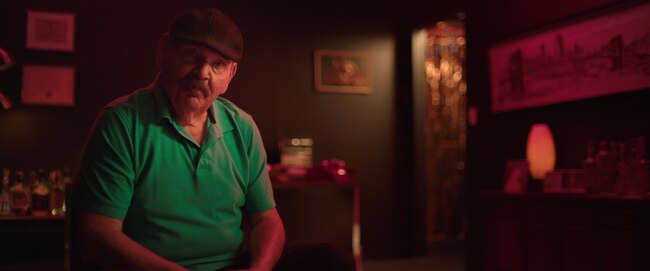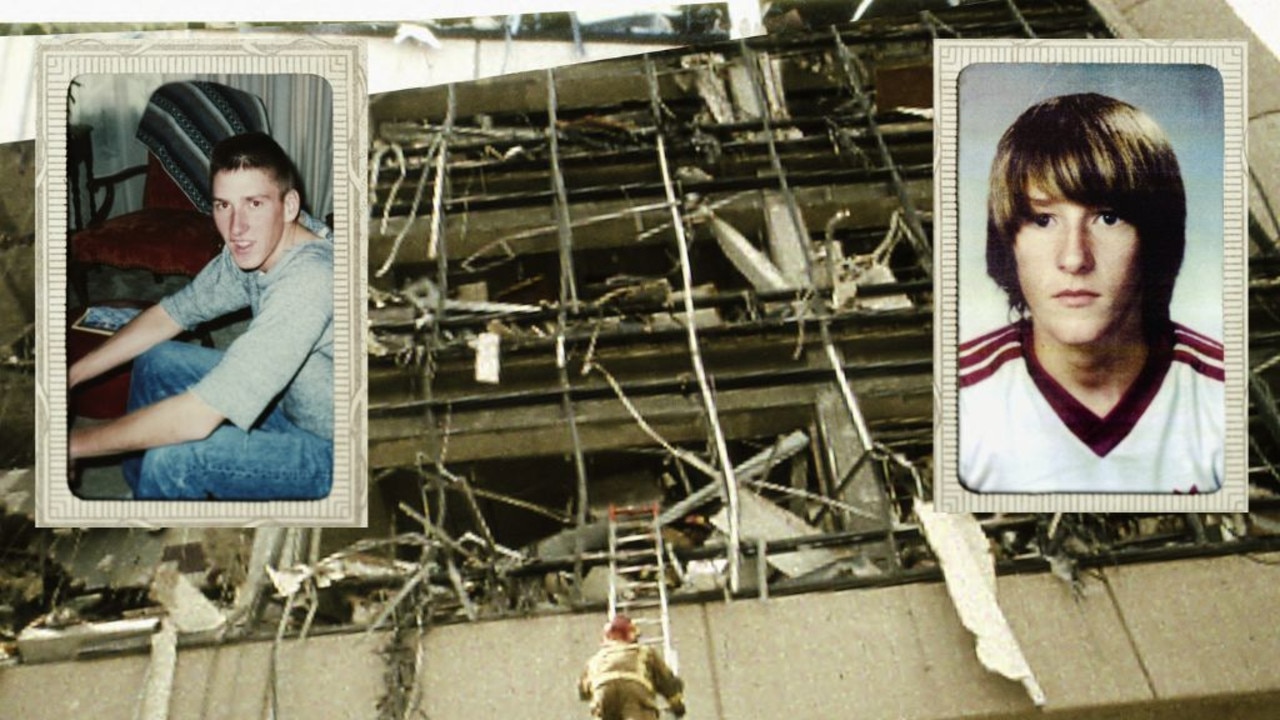Crime Scene: The Times Square Killer bring humanity to sex work’s murder victims
A new Netflix series brings a sense of social justice and humanity to the stories of female sex workers who were gruesomely murdered in New York in the late 1970s.

Crime Scene: The Times Square Killer is the second instalment of the hugely successful Netflix series from acclaimed director Joe Berlinger (Cold Blooded: The Clutter Family Murders), which started with The Vanishing at the Cecil Hotel.
In that series, Berlinger, who has become the most acclaimed and influential authority in the true-crime documentary, immersed us in both the mystery of a disappearing young woman and the noirish life of the Cecil Hotel, dropping us viscerally into its creepy atmosphere and seedy history.
It was the first of what Netflix has projected as an anthology series that investigates a crime or multiple misdemeanours that have occurred at notorious locations across the decades. What was originally a momentary thought from Berlinger has become a major series for the behemoth. (According to Netflix, 45 million households checked out the first season in the first four weeks of its debut. Understandably, the streamer subsequently renewed the docuseries for three more seasons.)
The filmmaker had become fascinated when making The Ted Bundy Tapes, his Netflix series on the notorious serial killer with the chameleon-like ability to deftly change appearances, by the way specific places contributed to terrible murders.
In this new series, produced by Brian Grazer and Ron Howard’s Imagine Documentaries, RadicalMedia and Berlinger’s Third Eye Motion Picture Company, Berlinger is again interested in the way crime is usually an intrusion in an orderly society; the way it occurs in a real setting and a culture particular to a place.
He says this series has enabled him to range more widely as he leans into place than when he’s tethered to individual stories. “Those issues fascinate me,” he says. “What is it about Seattle in the 1970s that led to a Ted Bundy? What is it about West Memphis and Arkansas in that particular time that allowed three teenagers to be accused of satanic ritual murders? What is it about South Boston, for example, that produced a very particular kind of Irish gangster in Whitey Bolger in the Winter Hill gang?”
Again in this new kaleidoscopic narrative documentary, Berlinger deconstructs a series of shocking murders that occurred in late 1979 that appalled even the hardened cops that tried to maintain order over the relatively lawless place called Times Square in New York. The killer was the notorious serial killer Richard Francis Cottingham from New Jersey operating in New York between 1967 and 1980. He was nicknamed “the torso killer”, due to his habit of dismembering his victims, usually leaving nothing but a torso behind.
In his now trademark fashion, like a cop on a complex cold case, Berlinger clarifies timelines and assembles a coherent narrative from fragments of information and seemingly countless pieces of archival footage.
He especially draws heavily on TV news footage, artfully staged interviews with journalists and writers who have written extensively about Times Square, some family members, and retired law enforcement officers involved in the case, along with judiciously edited re-enactments shot in the style of the period news coverage, some of which is surprisingly visceral.
“Actually, one of the things I’m most happy about with the second season is the look, because I tried very hard to evolve the language of re-creations using a colour palette and real Super 8 film,” Berlinger told Variety. “I wanted it to feel like this gritty 16 millimetre that evoked the era.” His idea was, he says, to illustrate how Cottingham was overwhelmed with the sensory overload in Times Square, which “encouraged him to break taboo after taboo. I wanted to give the production a vibe that evoked and brought that era to life.” And he does it with feeling, and filmic style, taking his cues from the period’s original garish neon signs and street lights.
Berlinger photographs his interview subjects like characters in a movie using long lenses of some sort so that whatever is behind them disappears into blobs of light and colour. Filmmakers have long used long lenses to communicate distance between a character and their surroundings, or to focus the audience’s attention on a character to the exclusion of all else.
And Berlinger uses the technique here to add to the cinematic values of his filmmaking, emphasising the play of lights and shapes. As he uses no script, simply an outline, these interviews are crucial for the filmmaker, informing him where to look next, his seamlessly produced re-creations filling the gaps where archival footage can’t be found.
At the time, Times Square, particularly 42nd St, known as “The Deuce” to its denizens, a place of dark corners and bright lights, was a hotspot for the sex industry, with cinemas showing X-rated films, peepshow booths, adult arcades, strip clubs, go-go bars and live sex shows. (It’s like a chapter of David Simon’s brilliant drama The Deuce – still available on Foxtel’s On Demand streamer – which re-creates 1970s Times Square around the same time in the moment when the underground pornography industry moved into the mainstream and large-scale porn production was born.)
So-called hot-sheet hotels charged hourly rates as low as $5 an hour; they had no phones, televisions, or airconditioning and the bathrooms were communal. “It was like being in the Wild West,” says the impressive Veronica Vera, sex journalist and porn star, in the series. “You didn’t know what was going to happen, and you were going there because you wanted to have an adventure.”
But it was no raunchy holiday for most of the sex workers. Trying to survive in an industry still highly illegal, many of the workers were trafficked into the city where the brothels were largely run by the New York mobs. As Berlinger shows so dramatically, given the illegality, violence against these women would largely go unreported at the time, the cops often on the take and oblivious to the plight of the young women.
The streets were not only full of tourists, commuters, and gawkers but an unholy array of pimps, sidewalk spruikers, cops and street hustlers, who savaged and terrorised in their own little slice of heaven in Manhattan. It was an area so crowded it was easy for the serial killer Cottingham at the centre of Berlinger’s narrative to move through the crowds unnoticed. All the fear and misery he had caused was sloughed off by the passing of strangers.
It all starts when a fire is discovered in the Travel Inn Motel Hotel. With their guns drawn, a couple of cops go to the fourth floor to room 417, the smell of burning flesh cutting through the thick smoke, to follow the first responder firemen. They find the two bodies of young women who have their heads and hands missing.
They had been doused with lighter fluid and set alight. The missing body parts were never found, but once X-rayed one victim was identified as Deedeh Goodarzi, 22, an immigrant from Kuwait who was working as a prostitute. The other headless corpse was never identified. Any clues to the killer’s identity were destroyed by the fire, though the victim’s clothing was left piled neatly in the bath.
It quickly became known to the police as a “needle in a haystack” case with as yet no DNA or surveillance technology available to the investigators. “I spent 31-and-a-half years in the New York City Department and you wouldn’t believe what I saw and for something to stand out it’s got to be pretty bad,” says Jim Riegel, one of the retired cops who features in the series. “It has to be absolutely horrifying and this case did stand out; it was pretty much the hotel room from hell.”
The series follows Cottingham’s grisly trail of brutal murder scenes in New York City and the nearby New Jersey suburbs that continue to bamboozle police but Berlinger’s concentration is more on the humanity of the women who are killed.
For the New York cops at the time, it seems it was easier to hassle sex workers than to catch a killer. “Police would roll up on a body that was in the dumpster and if they believed it was a sex worker they would classify it as ‘no human involved’,” Berlinger says. “Which meant they weren’t going to investigate this. I’ve been an advocate of victims through my work for decades and this is all deeply problematic. All victims of crime – no matter what you do for a living – need to be treated equally. That’s just a fundamental aspect of our justice system.”
It’s another piece of compelling prestige true crime TV and illustrates so cinematically the way Berlinger’s sense of social justice, his concern for Cottingham’s victims, separates him from many other true crime filmmakers.
Crime Scene: The Times Square Killer streaming on Netflix




To join the conversation, please log in. Don't have an account? Register
Join the conversation, you are commenting as Logout